Below is a small representation of the hundreds of investigations we’ve performed into our clients’ New York City properties. For each, we’ve produced a House History Book or House History Report. Contact us today to discover the history of YOUR house.********************************************************************************************************************************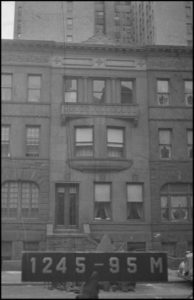
*
No. 338 West 84th Street – a 19th century Romanesque Revival townhouse, located in the Riverside-West End Historic District, this building sits within a row of townhouses constructed in 1889 by Nelson M. Whipple. Whipple, an otherwise successful builder, would find himself in court around this time for having allegedly committed fraud against the banks where he took mortgages to build these houses. He had allegedly sold the properties to a “dummy” (someone who allowed his name to be used in the sale of a property, but whose purpose was to conceal ownership of the property), a Civil War veteran who had been dishonorably discharged (and then reinstated by Pres. Lincoln, himself), who then sold the properties to another party. It was all very lurid and made some small amount of news at the time. The property was then conveyed to a number of upper- and upper-middle-class owners – an engineer, a printer, and a doctor – before it converted to a lodging house in the 1930s. After a period of being used as such, it was converted into an apartment house for a number of years before a recent gut reno returned it to a single-family residence.
********************************************************************************************************************************
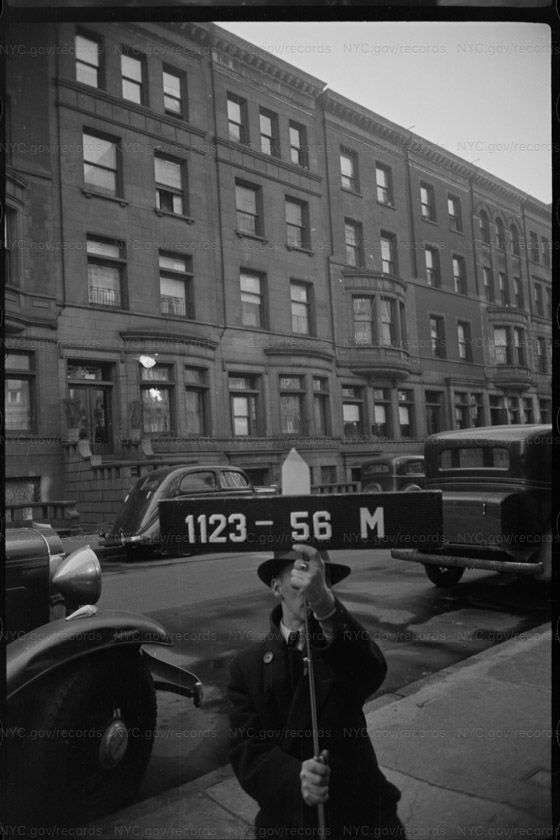 * No. 52 West 71st Street
* No. 52 West 71st Street is an approximately 135-year-old 5-story dwelling situated in the Upper West Side section of New York City. It was built in 1887 by James T. Farley, designed in the Renaissance Revival style by architects Thom & Wilson. Upon completion and sale to its first owner, the brownstone would, for some 32 years, belong to two prominent Jewish families, the members of which were active within their synagogues, relief societies, and other volunteer cultural, social, and religious institutions. The first family to own No. 52 was Louis Levenson, a clothing merchant. At his passing, the property was left to the daughter of an associate of Levenson’s, another wealthy clothing merchant, Charles L. Bernheim. By the 1920s, the brownstone once again changed hands, becoming the possession of an investor, Florence Wolff, who, while living in the property converted it to a rooming house. Although she lived there, herself, in the 1920s, it appears she would leave at the end of the decade, landing, in 1930, in the New York State psychiatric hospital in
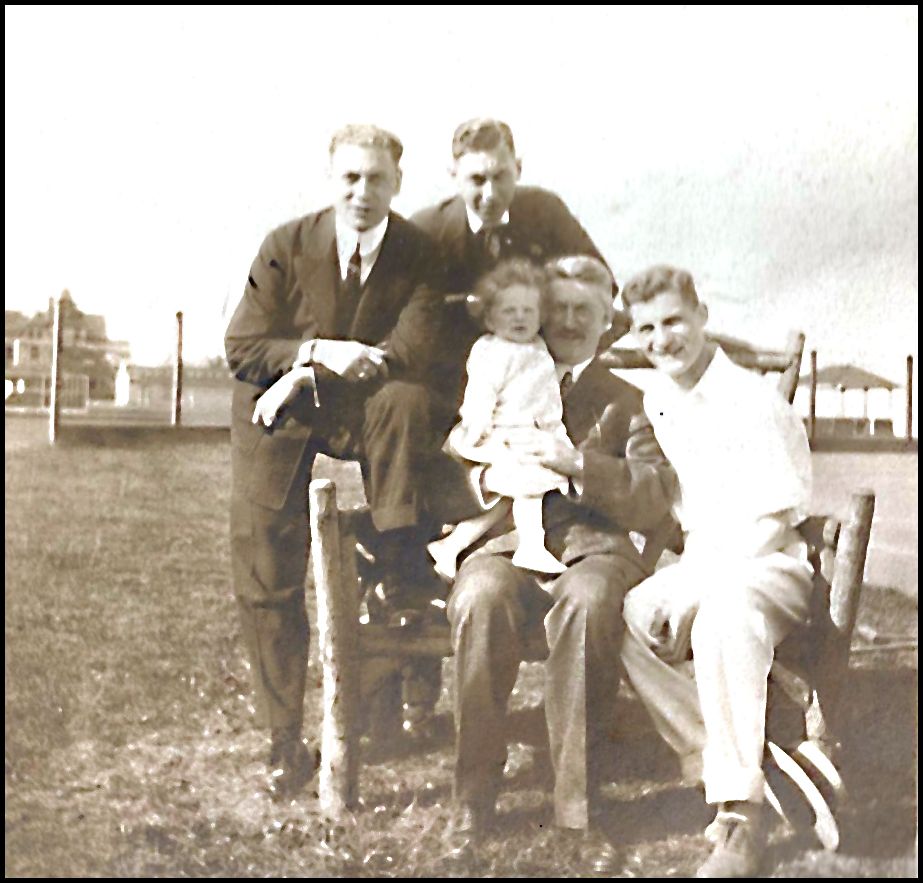
Poughkeepsie. Wolff would hold the property through the Depression years until 1940, conveying it then to the St. Mary’s Hospital for Children. St. Mary’s would only possess the property for approximately two years before conveying it to the owners who presently possess it, the Michael & Bertha Stegun Family, which had, incidentally, been leasing the property—to run as a rooming house—since 1934, eight years before purchasing the property. In 1943, it was learned that the world heavyweight boxer, Jack Dempsey, involved in a divorce lawsuit, was being charged by his wife with cheating. An occupant of No. 52, a “French refugee and singer,” Yvette Muriel Colbert, was identified by Dempsey’s wife as his mistress. After altering the property in the late 1940s, it legally became a Class “B” Multiple Dwelling, and was used for apartments and Class B sleeping rooms. In 1959, the building again changed uses after it was converted to a Class “A” Multiple Dwelling, holding only apartments, 10 in total.
********************************************************************************************************************************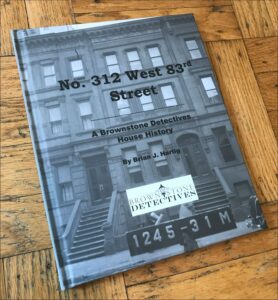
*
No. 312 West 83rd Street – The builders of Nos. 310-316 West 83rd Street began constructing their row of brownstones just at the beginning of the recession of 1893, however, and these properties, as a result, took some time to sell after their completion. No. 312, though, it was eventually sold to an optician who brought the “insanity” of his family with him when they moved in. The year of the purchase, one of the owner’s sons attempted suicide followed a few years later by the same son attempting to kill his father. At the optician’s passing—in a sanitarium, no doubt—the property was sold to a former assemblyman who, after moving in, would win a New York City judgeship. The wife of judge, both of
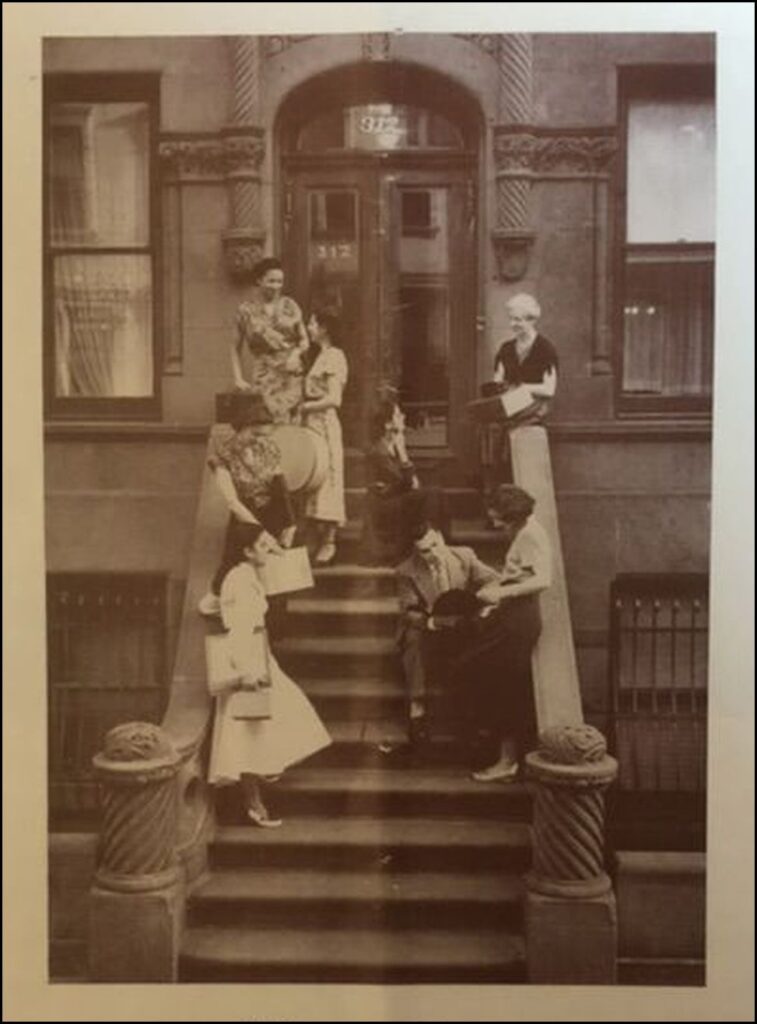
whom hailed from Kentucky, would become the president of The Dixie Club, a group of expat southern ladies whose objective was to relive the South’s glory days. By 1940, the property would be foreclosed upon by a trust company which had held a 50-year mortgage on the property. The following year, the trust sold No. 312 to an insurance salesman who would embark upon an illegal conversion to the property, then, subsequently, lease it out to a rooming house operator who, in turn, would rent out its five spaces by the week and the month. After city investigators discovered the illegal conversion, the property was sold to a couple—of Armenian descent—who, along with their daughter, would operate a fancy dressmaking school out of the home for nearly three quarters of a century. In 2018, when the school closed, the property would hit the chopping block. A few years later, a young couple appeared, purchasing No. 312, and returning the property full circle to its status as a single-family dwelling.
 * No. 338 West 84th Street – a 19th century Romanesque Revival townhouse, located in the Riverside-West End Historic District, this building sits within a row of townhouses constructed in 1889 by Nelson M. Whipple. Whipple, an otherwise successful builder, would find himself in court around this time for having allegedly committed fraud against the banks where he took mortgages to build these houses. He had allegedly sold the properties to a “dummy” (someone who allowed his name to be used in the sale of a property, but whose purpose was to conceal ownership of the property), a Civil War veteran who had been dishonorably discharged (and then reinstated by Pres. Lincoln, himself), who then sold the properties to another party. It was all very lurid and made some small amount of news at the time. The property was then conveyed to a number of upper- and upper-middle-class owners – an engineer, a printer, and a doctor – before it converted to a lodging house in the 1930s. After a period of being used as such, it was converted into an apartment house for a number of years before a recent gut reno returned it to a single-family residence.
* No. 338 West 84th Street – a 19th century Romanesque Revival townhouse, located in the Riverside-West End Historic District, this building sits within a row of townhouses constructed in 1889 by Nelson M. Whipple. Whipple, an otherwise successful builder, would find himself in court around this time for having allegedly committed fraud against the banks where he took mortgages to build these houses. He had allegedly sold the properties to a “dummy” (someone who allowed his name to be used in the sale of a property, but whose purpose was to conceal ownership of the property), a Civil War veteran who had been dishonorably discharged (and then reinstated by Pres. Lincoln, himself), who then sold the properties to another party. It was all very lurid and made some small amount of news at the time. The property was then conveyed to a number of upper- and upper-middle-class owners – an engineer, a printer, and a doctor – before it converted to a lodging house in the 1930s. After a period of being used as such, it was converted into an apartment house for a number of years before a recent gut reno returned it to a single-family residence.
 * No. 52 West 71st Street is an approximately 135-year-old 5-story dwelling situated in the Upper West Side section of New York City. It was built in 1887 by James T. Farley, designed in the Renaissance Revival style by architects Thom & Wilson. Upon completion and sale to its first owner, the brownstone would, for some 32 years, belong to two prominent Jewish families, the members of which were active within their synagogues, relief societies, and other volunteer cultural, social, and religious institutions. The first family to own No. 52 was Louis Levenson, a clothing merchant. At his passing, the property was left to the daughter of an associate of Levenson’s, another wealthy clothing merchant, Charles L. Bernheim. By the 1920s, the brownstone once again changed hands, becoming the possession of an investor, Florence Wolff, who, while living in the property converted it to a rooming house. Although she lived there, herself, in the 1920s, it appears she would leave at the end of the decade, landing, in 1930, in the New York State psychiatric hospital in
* No. 52 West 71st Street is an approximately 135-year-old 5-story dwelling situated in the Upper West Side section of New York City. It was built in 1887 by James T. Farley, designed in the Renaissance Revival style by architects Thom & Wilson. Upon completion and sale to its first owner, the brownstone would, for some 32 years, belong to two prominent Jewish families, the members of which were active within their synagogues, relief societies, and other volunteer cultural, social, and religious institutions. The first family to own No. 52 was Louis Levenson, a clothing merchant. At his passing, the property was left to the daughter of an associate of Levenson’s, another wealthy clothing merchant, Charles L. Bernheim. By the 1920s, the brownstone once again changed hands, becoming the possession of an investor, Florence Wolff, who, while living in the property converted it to a rooming house. Although she lived there, herself, in the 1920s, it appears she would leave at the end of the decade, landing, in 1930, in the New York State psychiatric hospital in  Poughkeepsie. Wolff would hold the property through the Depression years until 1940, conveying it then to the St. Mary’s Hospital for Children. St. Mary’s would only possess the property for approximately two years before conveying it to the owners who presently possess it, the Michael & Bertha Stegun Family, which had, incidentally, been leasing the property—to run as a rooming house—since 1934, eight years before purchasing the property. In 1943, it was learned that the world heavyweight boxer, Jack Dempsey, involved in a divorce lawsuit, was being charged by his wife with cheating. An occupant of No. 52, a “French refugee and singer,” Yvette Muriel Colbert, was identified by Dempsey’s wife as his mistress. After altering the property in the late 1940s, it legally became a Class “B” Multiple Dwelling, and was used for apartments and Class B sleeping rooms. In 1959, the building again changed uses after it was converted to a Class “A” Multiple Dwelling, holding only apartments, 10 in total.
Poughkeepsie. Wolff would hold the property through the Depression years until 1940, conveying it then to the St. Mary’s Hospital for Children. St. Mary’s would only possess the property for approximately two years before conveying it to the owners who presently possess it, the Michael & Bertha Stegun Family, which had, incidentally, been leasing the property—to run as a rooming house—since 1934, eight years before purchasing the property. In 1943, it was learned that the world heavyweight boxer, Jack Dempsey, involved in a divorce lawsuit, was being charged by his wife with cheating. An occupant of No. 52, a “French refugee and singer,” Yvette Muriel Colbert, was identified by Dempsey’s wife as his mistress. After altering the property in the late 1940s, it legally became a Class “B” Multiple Dwelling, and was used for apartments and Class B sleeping rooms. In 1959, the building again changed uses after it was converted to a Class “A” Multiple Dwelling, holding only apartments, 10 in total.
 * No. 312 West 83rd Street – The builders of Nos. 310-316 West 83rd Street began constructing their row of brownstones just at the beginning of the recession of 1893, however, and these properties, as a result, took some time to sell after their completion. No. 312, though, it was eventually sold to an optician who brought the “insanity” of his family with him when they moved in. The year of the purchase, one of the owner’s sons attempted suicide followed a few years later by the same son attempting to kill his father. At the optician’s passing—in a sanitarium, no doubt—the property was sold to a former assemblyman who, after moving in, would win a New York City judgeship. The wife of judge, both of
* No. 312 West 83rd Street – The builders of Nos. 310-316 West 83rd Street began constructing their row of brownstones just at the beginning of the recession of 1893, however, and these properties, as a result, took some time to sell after their completion. No. 312, though, it was eventually sold to an optician who brought the “insanity” of his family with him when they moved in. The year of the purchase, one of the owner’s sons attempted suicide followed a few years later by the same son attempting to kill his father. At the optician’s passing—in a sanitarium, no doubt—the property was sold to a former assemblyman who, after moving in, would win a New York City judgeship. The wife of judge, both of whom hailed from Kentucky, would become the president of The Dixie Club, a group of expat southern ladies whose objective was to relive the South’s glory days. By 1940, the property would be foreclosed upon by a trust company which had held a 50-year mortgage on the property. The following year, the trust sold No. 312 to an insurance salesman who would embark upon an illegal conversion to the property, then, subsequently, lease it out to a rooming house operator who, in turn, would rent out its five spaces by the week and the month. After city investigators discovered the illegal conversion, the property was sold to a couple—of Armenian descent—who, along with their daughter, would operate a fancy dressmaking school out of the home for nearly three quarters of a century. In 2018, when the school closed, the property would hit the chopping block. A few years later, a young couple appeared, purchasing No. 312, and returning the property full circle to its status as a single-family dwelling.
whom hailed from Kentucky, would become the president of The Dixie Club, a group of expat southern ladies whose objective was to relive the South’s glory days. By 1940, the property would be foreclosed upon by a trust company which had held a 50-year mortgage on the property. The following year, the trust sold No. 312 to an insurance salesman who would embark upon an illegal conversion to the property, then, subsequently, lease it out to a rooming house operator who, in turn, would rent out its five spaces by the week and the month. After city investigators discovered the illegal conversion, the property was sold to a couple—of Armenian descent—who, along with their daughter, would operate a fancy dressmaking school out of the home for nearly three quarters of a century. In 2018, when the school closed, the property would hit the chopping block. A few years later, a young couple appeared, purchasing No. 312, and returning the property full circle to its status as a single-family dwelling.